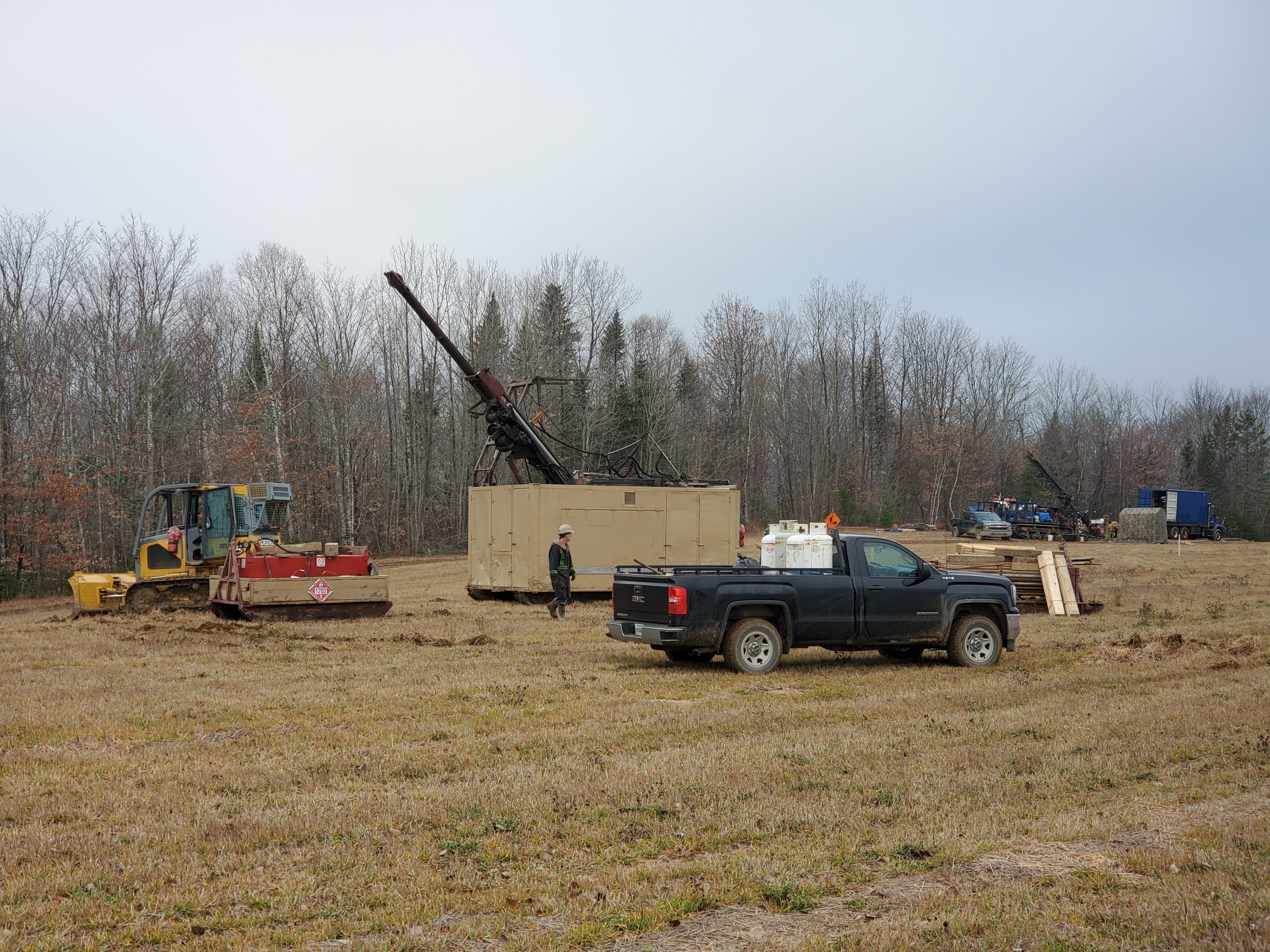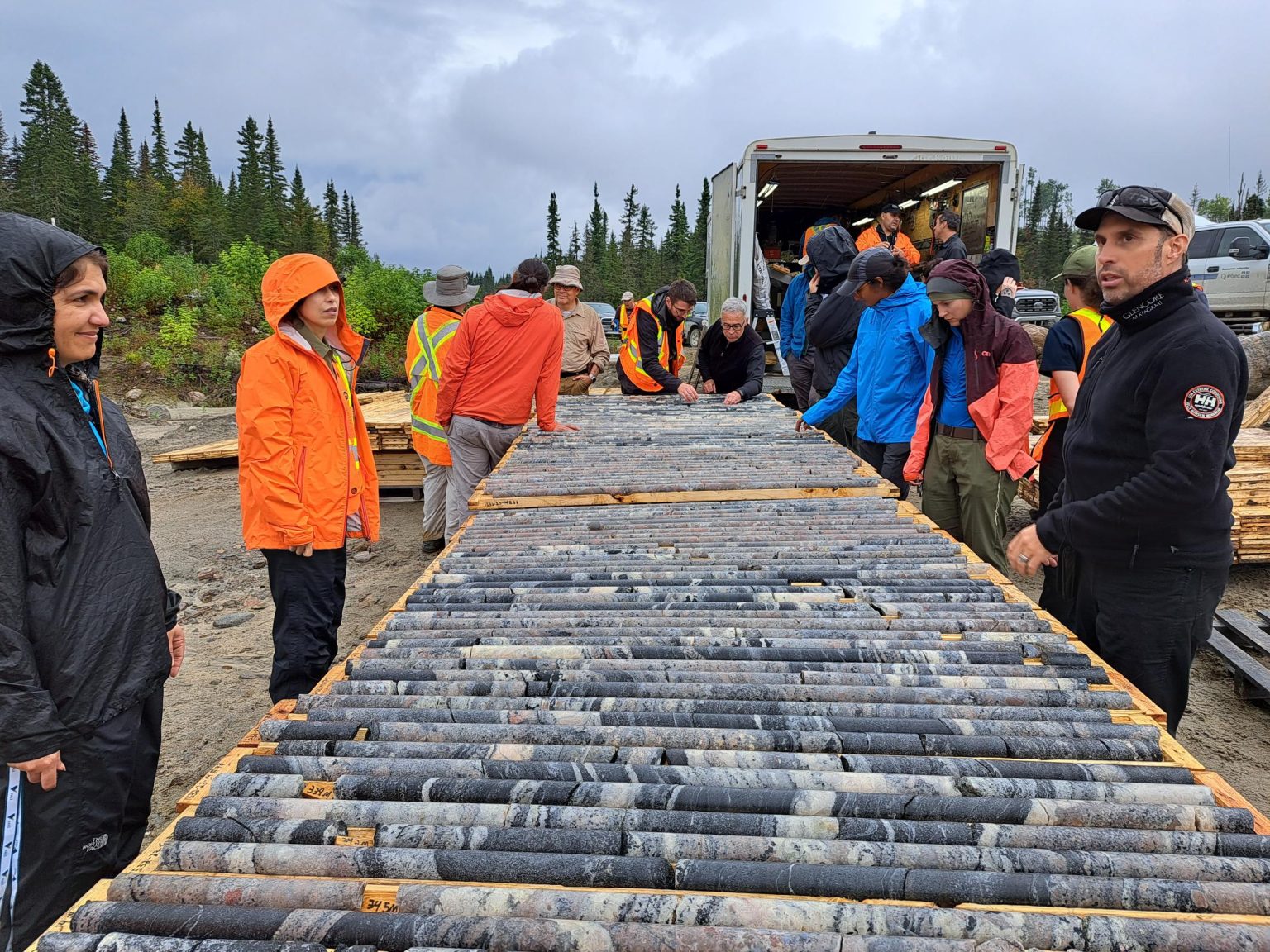Early diamonds launch Gahcho Kue mine
If the logistics of building a $1 billion diamond mine 400 kilometres south of the Arctic Circle sound daunting, try organizing its opening ceremony.

The Gahcho Kue site in September 2016.
With a guest list of 150 investors, aboriginal chiefs, politicians, company officials and media from as far afield as Africa, the UK and Ireland, it took four aircraft from Calgary and Yellowknife to fly everyone in for the launch of the Gahcho Kue project on Sept. 20, 2016.
The six-hour event was a reflection of the meticulous planning poured into the NWT’s fourth diamond producer (Canada’s sixth) since the deposit was discovered some 21 years ago by Mountain Province Diamonds. It attracted De Beers to the find in 1997, and the two forged a 51:49 joint venture to bring it forward with De Beers holding 51% and acting as operator.

Meticulous planning led to a smooth start-up at the Gahcho Kue mine where a 50-ct diamond was recovered during commissioning.
There was ample cause for celebration: their combined $1.056 billion investment is expected to harvest 54 million carats and pump hundreds of jobs and hundreds of millions of dollars into the NWT’s flat lined economy over its 12-year life.
“It’s a big deal for the NWT, for Canada, for De Beers and for Anglo American,” said Kim Truter, De Beers Canada CEO.

Kim Truter (left), De Beers Canada CEO, and Patrick Evans, Mountain Province Diamonds president and CEO, huddle with a display of rough.
“Our singular focus is to repay our shareholders and business partners,” said Patrick Evans, president and CEO of Mountain Province, “and to operate this diamond mine for the benefit of our employees and the communities they call home.” Among the other speakers was Bill Enge, president of the NWT North Slave Metis Alliance, one of six indigenous groups which will receive beneficiary payments over life of the mine.
“It’s a very significant development in the Northwest Territories,” Enge said.

Aboriginal drummers offer a prayer during the Feed the Fire ceremony witnessed by almost 300 guests and staff.
“De Beers and Mountain Province have forged ahead with the construction of this mine – a billion-dollar mine – in light of the terrible downturn in the mining industry across the world.
“I think it will generate a lot of spin offs from this mine,” said Tlicho grand chief Eddie Erasmus. “for people up here in the north and Yellowknife, the Northwest Territories and Canada as a whole” De Beers claims the overall project will be a $6.7 billion boost to Canada’s economy. It comes at a critical time for both the NWT and De Beers.
For the NWT, it could at least replace the job and revenue losses brought on when De Beers shocked the territory by shuttering its problem-plagued Snap Lake mine in December 2015, at least a decade earlier than planned.
For De Beers, it marks the opening of its first mine since 2008 and its largest outside of South Africa. It will bring new high quality production into a supply chain that is forecast to start shrinking by 2020, and when prices for rough and demand for finished jewelry are expected to firm up.
Hatch, JDS score top award
Hatch Ltd., the global engineering firm, was brought into Gahcho Kue in 2010 by JDS Mining and Energy, to partner on the engineering, procurement and construction management (EPCM) challenge. Years of planning and co-ordination went into the two-year campaign to deliver and build the mine between 2014 and 2016.
John Bryant of Hatch was assigned as project manager in 2012. Bryant says the big push was to source construction equipment and a 450-person camp and get it marshalled in Yellowknife for the January opening of the 2014 ice road season.
While 2014 was a good winter road year, 2015 was a different story. Three bad storms cut into the season, but some 2,500 loads of critical machinery, materials and fuel did make it over the 400-km ice road.
Over the 2016 season, the mine shipped in 47 million litres of fuel and 50,000 tonnes of explosives along with a year’s supplies.
Regulatory issues also created headaches. A permit for a carefully planned laydown area was withdrawn just weeks before trucking started in 2015, requiring a major push to build a new one in a hurry. Delays for accessing the mine’s permanent airstrip site meant a smaller, short term strip had to be built, capable only of Twin Otter aircraft.
“That changed the construction cycle significantly,” says Bryant, who needed up to 10 flights a day to move people and groceries for over four months.
Regardless, the EPCM team, lead by Allan Rodel (now mine general manager), brought Gahcho Kue on two months ahead of schedule and on budget. Bryant, along with the owners, lauded the team’s exemplary safety record: only three losttime incidents in 3.8 million hours logged by over 1,800 workers.
The project has already garnered recognition. The Project Management Institute, Montréal Chapter, gave its top honour in the private industry category to Gahcho Kue in November. Earlier in 2016, the Yellowknife Chamber of Commerce singled it out for its workplace health and safety award.
Smooth ramp-up
Three pipes will be mined at Gahcho Kue, a Chipewyan name meaning “the place of big rabbits.” Stripping began two years ago at 5034 pipe, with the first kimberlite fed into the 8,000-t/d mill in early June and the actual ramp-up started on Aug. 1.
Tuning a diamond process plant is a Tom Ormsby, De Beers head of public and corporate affairs.
“Ramping up means slowly putting more into the system, with the right mix of country rock, and learning to balance those levels. It’s also learning the orebody, the fine versus coarse material,” says Ormsby. “It was really a well-executed project, not just for De Beers Canada, but for us globally. It’s really held up as a good example for how a project should be done.”
The proof is in the early impressive results: by the end of September, 198,000 carats had been recovered, grading 1.52 carats/tonne. It included a number of “specials”, stones bigger than 10.8 carats which command big premiums if they’re of very high quality or vivid color. The best so far weighs just over 50 carats.
The annual process target is 4 million carats, with full commercial production underway by Q1 2017. Prices are forecast at US$185 per carat, with operating margins of over 80%.
The partners will split production along their 51:49 ownership, with an internal auction to bid for parcels of the specials. Along with all other NWT mines, they are also obliged to offer up to 10% of production to NWT-based polishers; only one company, Crossworks, is established at this time.
From that point, Mountain Province will entrust its Antwerp-based broker, Bonas, with selling its parcels through conventional open tender to cutters and polishers every five weeks. De Beers has its own global marketing system under its trademarked Forever brand, carried by some 2,000 retailers.
Evans says his company will focus exclusively on managing Gahcho Kue as its sole asset and is not pursuing any new projects or exploration. De Beers, on the other hand, has had active exploration in Canada since the 1960s, and will continue.
“We do have a lot of activity across the country,” says Ormsby, “but the front runner is a joint venture with CanAlaska Uranium on kimberlite targets in the Athabasca region of northern Saskatchewan.”
De Beers’ exploration budget for 2017 is pegged at $10 million.
De Beers is also pursuing expansion of its Victor mine near James Bay in Ontario, with plans for a bulk sample this winter at the Tango Extension, one of 16 kimberlites discovered by the company in 1987 – four years earlier than the find that set off the NWT rush, he points out. Tango could add five years to Victor’s production, which would otherwise be exhausted by 2019.
Photos by Bill Braden, BillBradenPhotography@gmail.com.





Comments